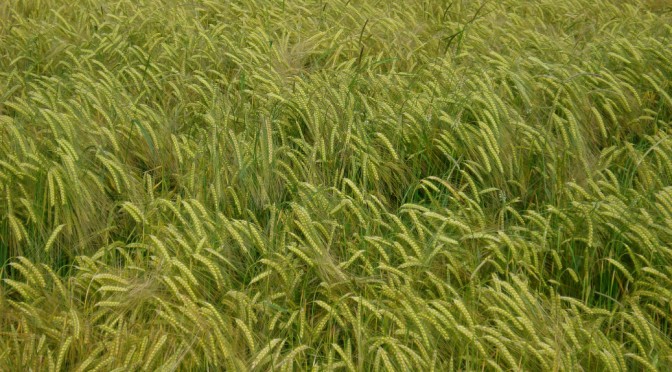A Cows Natural Diet consists of plants that can be “grazed” or “browsed.” Grazing generally refers to the eating of grasses, and browsing usually refers to the eating of leaves, twigs, or bark from bushes or trees. Cows both graze and browse, but they are definitely more “grazers” than “browsers” and their complicated four-part stomach helps them to slowly digest relatively large amounts of grasses.
Scientists have acquired this knowledge of cows by studying a broader group of animals to which cows belong. The animals in this group are called “ruminants.” Ruminants get their name from the activity of “ruminating,” which means chewing their cud. Ruminants briefly chew their food, swallow it, allow the first chamber in their stomach to partially digest it, and then regurgitate it back into their mouth to chew it again to allow very thorough digestion. Cows are members of this group, along with goats, sheep, deer, and other animals.
The Word “Grass-Fed”
The word “grass-fed” can be confusing because cows and other grass-fed animals may eat a wide variety of plants besides grasses. Grasses—including bluegrass, ryegrass, bermudagrass, fescue, Timothy grass, foxtail, sorghum, bromegrass, orchardgrass, quackgrass, and canarygrass—are commonly planted in pastures and almost always play a fundamental role in the diet of grass-fed cows. However, a cows diet will include many non-grass plants that also found in pastures, including legumes like alfalfa, vetch, sainfoin, and birdsfoot trefoil as well as red, white, and crimson clover. Depending on the season and region of the country, 100% grass-fed cows may have eaten a mixed variety of the plants above, along with other naturally occurring vegetation. In the spring, grasses will have a protein content of approaching 20 percent and will be around 10 percent protein when in mid-bloom, or when half the plants have developed a seedhead. These seeds are grazed as well and a typical cow will prefer them.
Seedheads are grain
I love watching cattle when they enter a new paddock. If it is a sward dominated by mature fescue they eagerly graze seedheads first, the same way I might eat ice cream first if I didn’t have 55 years of training that dessert is always the last course of the meal. (Darn you, Mom!)
If warm-season and cool-season forage is there they eat a lot of the warm season forage and some seedheads. In the fall, I see them strip a lot of seedheads from warm-season grass as the first course in new-paddock meal and they always browse tree leaves as one of their first choices if trees are available.
All this leads me back to my realization within the last three or four years that a forage diet for cattle is always lacking in energy, at least for optimum performance. It is worse in cool-season plants than in warm-season plants like the tallgrasses.
…They’re after energy. Remember that all the grains of the world are just seeds of grasses or leguminous plants. Energy in the form of seeds/grain is what the cattle are relishing in my pasture now. Back when they lived in big herds the forage was often in various states of maturity before they came back around to graze it.

